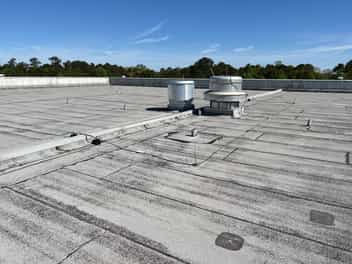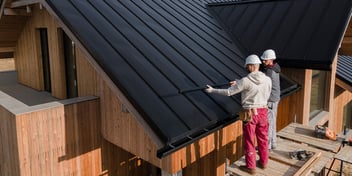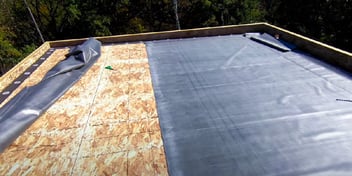- Home »
- Learningcenter »
- Tpo epdm pvc roofing
TPO vs. EPDM vs. PVC: Which Roofing Type is Best For Me?

When it’s time to replace your flat or low-slope roof, it’s easy to get overwhelmed by the various options. Three of the most popular types of roofing for commercial buildings are TPO, PVC, and EPDM, all with a laundry list of pros and cons.
This can leave you with a nagging question– how can you know which one is right for you?
Determining the right roofing solution for your needs requires that you consider a wide variety of factors– the specifics of your building, the climate, your budget, your priorities, and more.
Let’s take a closer look at these roofing material options to help you decide on the system that will best serve your needs.
What Is TPO?
Thermoplastic polyolefin (TPO) roofing membranes are composed of a blend of ethylene-propylene rubber and polypropylene. Perhaps the most commonly used commercial roofing product these days, TPO is also the newest roofing membrane on the market.
The two reasons why TPO has become so dominant in the market so quickly are that it is a relatively affordable roofing product and that it’s white. These days, being white isn’t such a rare thing– even the classically black EPDM rubber roofs are now available with a laminated white top. When they first hit the market, though, their white color helped to differentiate them from competitive materials.
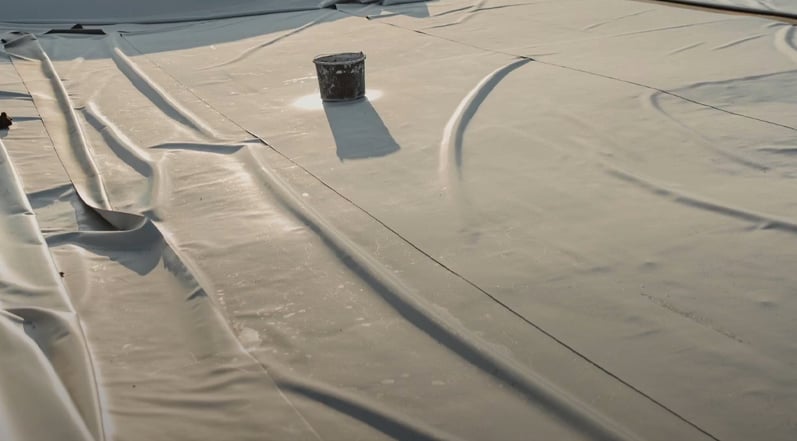
Manufacturers have altered and improved the proprietary formula for TPO over the years since it was first developed. At the same time, since it is a newer material and the formula has been changed repeatedly, the newest iterations of TPO roofs haven’t been installed long enough to run one of the most important tests– the test of time.
TPO Roofing Benefits
While cost and energy efficiency are the two main reasons that TPO is such a popular roofing membrane, there are a few other things you’ll want to consider when choosing your roofing material.
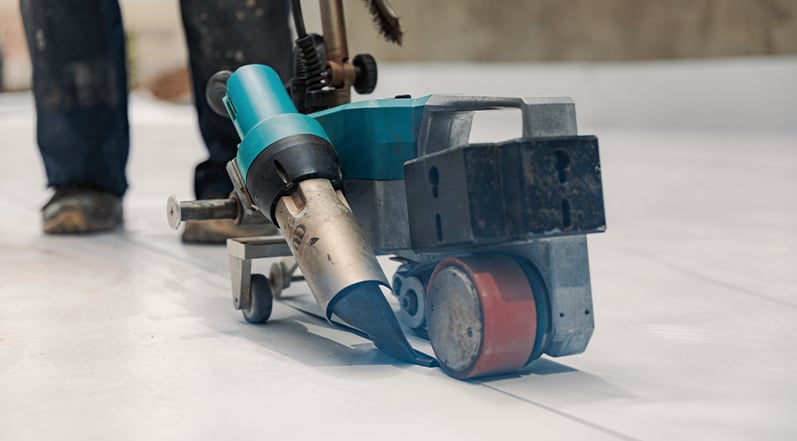
Cost
Probably the most dominant reason that TPO has become a popular roofing material is the cost. Many people that choose a TPO roof are doing so because it is one of the cheapest available options on the market.
Energy Efficiency
In addition to its affordable price tag, the second most compelling reason to install a TPO roof is the fact that it’s one of the most popular cool roofing methods. Resistant to UV rays and reflective of sunlight due to its white color, TPO has become a popular choice for places that receive a lot of exposure to the sun.
Easy to Install and Repair
For people looking for cost-effective roofing solutions, TPO can be a good choice. It is relatively easy to work with for experienced contractors and has fewer seams which speeds up the installation process.
Potential Issues With TPO Roofing
You’ll also want to consider some of the potential downsides of TPO before selecting it as your roofing membrane material.

Shrinking
One of the complaints about TPO roofing is that it has a tendency to shrink. This means that it can pull away from seams and curbs, leaving roofs vulnerable to water intrusion.
Not Great For DIY
Even though experienced roofing contractors can install a TPO roof relatively quickly, it isn’t the easiest product to use if you’re considering installing the roof yourself. It can be a bit difficult to move TPO membranes around and get them correctly positioned because they come in wide rolls. Beyond that, proper installation requires experience and specialized tools.
Questions About Longevity
Since TPO roofing is a newer material and the formulations have changed over the decades since it was first introduced, there are some questions about just how long TPO roofs really last. Though some estimates place the lifespan of these roofs at ten to twenty years, there is less certainty because of the newness of the material.
What Is EPDM?
Ethylene propylene diene monomer (EPDM) roofs, also commonly referred to as “rubber roofs,” are composed of synthetic rubber that is derived from natural gas and oil. The flexible EPDM membrane is created when ethylene propylene is combined with diene.
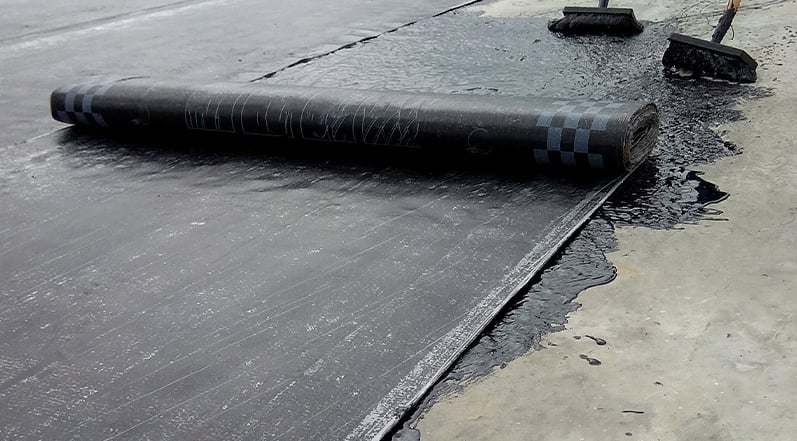
This type of membrane can either be vulcanized or non-vulcanized. Vulcanized means that it can be dried and cured into sheets or material, while non-vulcanized means that it can be used in a semi-solid form.
EPDM Roofing Benefits
What are some of the reasons you might choose an EPDM roof over the other options? Let’s take a look.

Affordable
EPDM is considered one of the more affordable roofing solutions for low-sloped roofs. Though there can be quite a bit of variation between products and manufacturers, this can be a good choice for budget-conscious building owners.
Long Track Record
EPDM has been widely used for many decades and has a long track record for durability. You can typically expect this type of roof to last for twenty years or more as long as it’s properly installed.
Potential Issues With EPDM Roofing
What are some of the downsides of EPDM roofing membranes? Though it’s known for its durability and affordable materials cost, there are some cons to EPDM that you’ll want to consider.
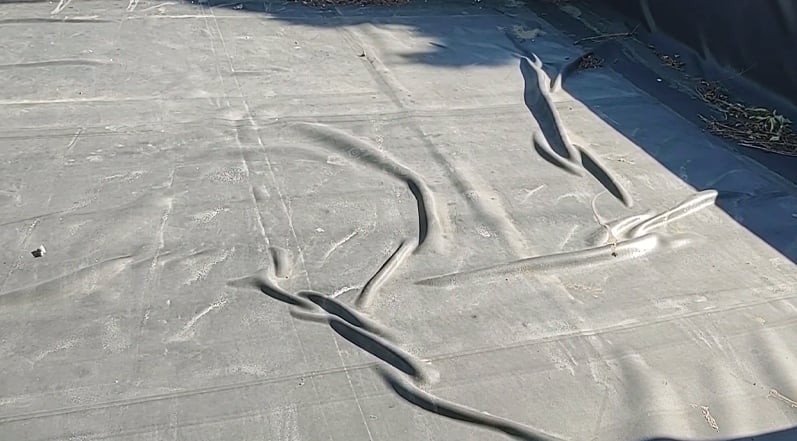
Standard Black Color
EPDM is perhaps best known for its dark black color, but these days you can get EPDM membranes that have a laminated light-colored layer. White roofing membranes have become increasingly popular because of their energy-saving capabilities, and purchasing EPDM roofing in a lighter color typically increases the material’s cost.
Some experts say that white-on-black EPDM roofs aren’t as durable as classic black EPDM roofs. White-on-black EPDM roofs also typically have a 10-year warranty against factory defects and weatherability, while black EPDM roofs carry a 20-year warranty against factory defects and weatherability.
EPDM Can Be Fragile
As EPDM gets near the end of its life, it can become fragile. Specifically, as it ages, it can be subject to shrinkage.
Aesthetic Considerations
Many people don’t find black rubber roofs to be particularly visually appealing. If your low-sloped roof is visible from the street and you are concerned with the aesthetics of your new roof, the standard black EPDM membrane might not be the way to go.
Installation Cost
Even though EPDM is considered one of the more affordable low-slope roofing options, the installation cost can vary depending on the method that is used to attach the product. Mechanically attached or fully adhered EPDM systems are typically more expensive than TPO systems, while ballasted systems are inexpensive comparatively.
What Is PVC?
Polyvinyl chloride (PVC) is a material that actually results from a chemical reaction known as polymerization. Polymers are compounds of either natural or synthetic origin that are made up of large molecules that themselves consist of monomers, which are chemically bonded smaller molecules. When ethylene reacts with oxygen and hydrochloric acid, PVC is produced.

There’s a good chance you’ve encountered PVC before, whether you realize it or not. This versatile material is used in everything from windows and flooring to waste pipes and architectural glazing systems.
Even though PVC is typically a hard, firm material, PVC roofing membranes have plasticizers added to them to increase flexibility and pliability. Though these roofs can be attached via fully adhered or ballasted systems, they are most often mechanically attached and heat-welded at the seams.
The Benefits of PVC Roofs
PVC roofs are often considered one of the best options if you are prioritizing durability and lifespan for your flat or low-sloped roof.
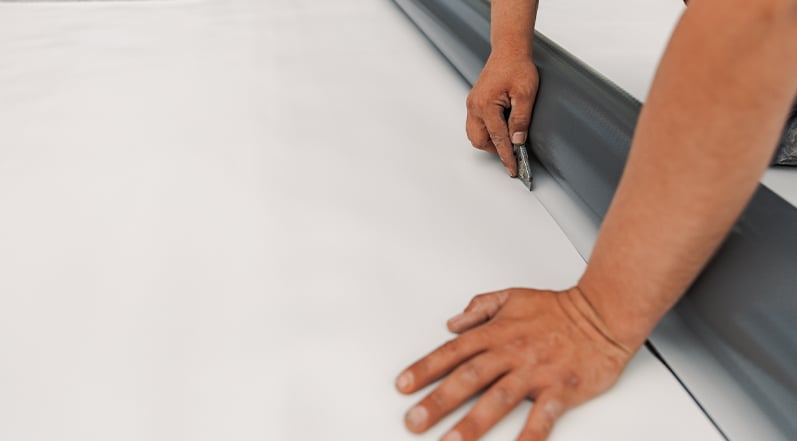
Durability
PVC roofing systems are incredibly durable. Beyond that, they are well suited to withstand the way that buildings will expand and contract throughout the day in response to fluctuating temperatures. Since the seams are almost heat-welded, a PVC roof becomes a monolithic structure that provides much more durable seams than seams that are taped or glued.
Lightweight
PVC typically comes in thicknesses between 36 and 90 mils, with the standard membrane coming in a thickness of about 50 mils.
Resistance to Bacteria, Chemicals, and Fire
PVC is well-known for being highly resistant to bacteria growth, various chemicals, and fire. Beyond that, it has excellent resistance to animal fats and plant roof penetrations.
Lifespan
PVC roofs can last up to twenty years or longer and are known for being specifically engineered for strength. Many PVC roofing membranes have a minimum breaking strength that is more significant than the American Society of Testing and Materials standard. Beyond that, it’s known for being highly capable of withstanding harsh winds and the micro-movements of a building that accompany rough weather.
Potential Issues With PVC Roofs
Though PVC roofs are considered a solid choice for building owners that want a long-lasting and extremely durable roofing solution, that doesn’t mean it doesn’t have its own share of downsides.
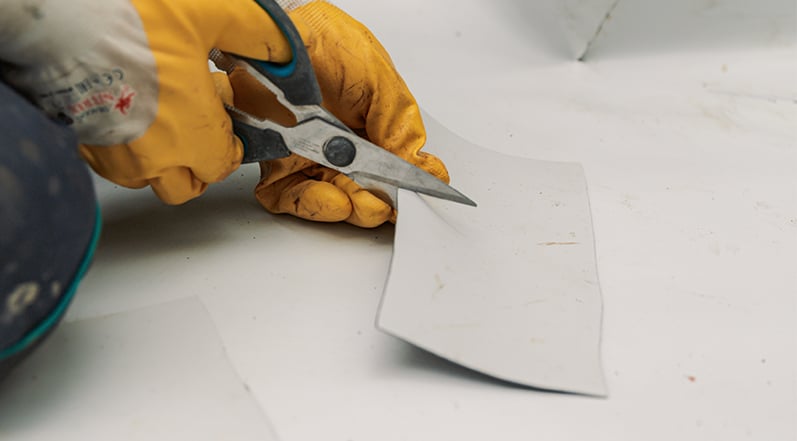
Incompatibility With Asphalt Products
PVC as a material isn’t compatible with asphalt-based products. This means that PVC must be kept from being in direct contact with any asphalt by installing separator sheets.
Can Become Fragile With Age or in the Wrong Climate
As PVC gets older, it can become fragile and require more repairs. Typically, this can happen once a roof has reached the ten-year mark. It also doesn’t perform nearly as well in cold climates, as it becomes more vulnerable to punctures or even shattering.
If you’re trying to choose between TPO and PVC as a roofing material for your structure, make sure you take a look at our comprehensive comparison of these two popular membranes.
Which Roofing Type Is Best For Me?
In order to determine the right type of roofing material for your structure, you’ll want a professional roofing contractor to evaluate the existing conditions as well as your personal preferences and priorities.
For instance, if one of your highest priorities is getting a white roofing system to help keep your cooling costs down and extend the life of your cooling system, it’s typically better to use a material that is white to begin with rather than a black roof that is laminated with a lighter colored exterior layer.
As another example, if you’re primarily interested in keeping costs down, you’ll have to understand that choosing the cheapest possible roofing system will end up costing money sooner down the road in terms of requiring repairs and replacement.
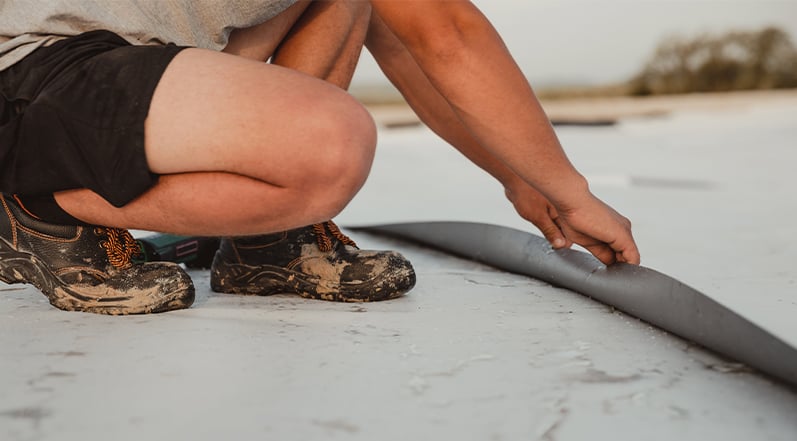
On the other hand, maybe you are willing to invest more upfront in order to ensure that your roofing system will last as long as possible without degrading and requiring a replacement. Depending on the materials, your structure, and many other factors, investing a bit more upfront can often be less expensive over the roof’s life.
One of the best ways to understand what you should expect from a roofing material is to compare warranties between manufacturers. The more willing a manufacturer is to stand behind their product, the more you can assume that it will be durable and long-lasting.
Of course, digging into the details of manufacturers’ warranties can be a bit overwhelming and confusing. For this reason, it’s a good idea to work with a reputable and experienced roofing contractor to help you determine the right type of roofing system. It’s worth shopping around for roofing professionals that actually have your best interest in mind and help you find a solution that fits your needs and budgets rather than a company that just wants to make a quick buck.
Important Caveats Regarding Roofing Materials
Before we sign off, it’s important to note that even the most incredible roofing materials in the world will still not provide the protection you need if they aren’t installed correctly. A successful, durable, and long-lasting roofing system is the result of both high-quality roofing products and experienced roofing professionals.
Beyond that, it’s important to understand that there are countless manufacturers that offer a wide variety of PVC, EPDM, and TPO products. They are not all created equal, and there can be quite a bit of quality differences between manufacturers.
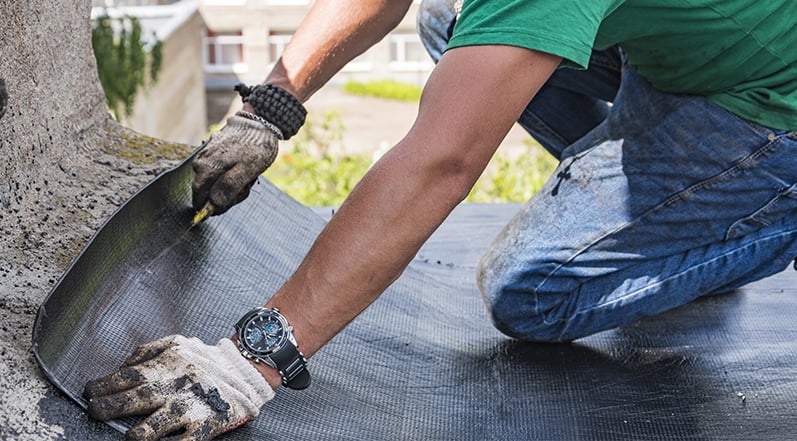
For this reason, your choice of roofing material goes beyond simply selecting the best option for you between TPO, PVC, and EPDM. Comparison shopping doesn’t end once you have chosen the material you want to use; it’s also important to understand how quality can differ between different manufacturers.
At Colony Roofers, we specialize in providing the highest-quality roofing systems at the most affordable prices in the Atlanta area. If you have any questions about which type of roofing material would be best for your structure or how to choose the right manufacturer, we are always more than happy to answer your questions.
 Call (678) 365-3138
Call (678) 365-3138

